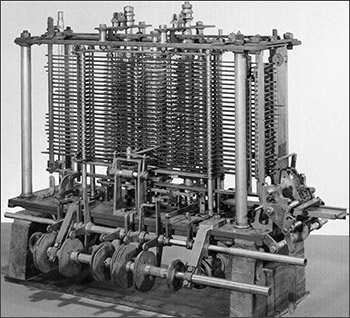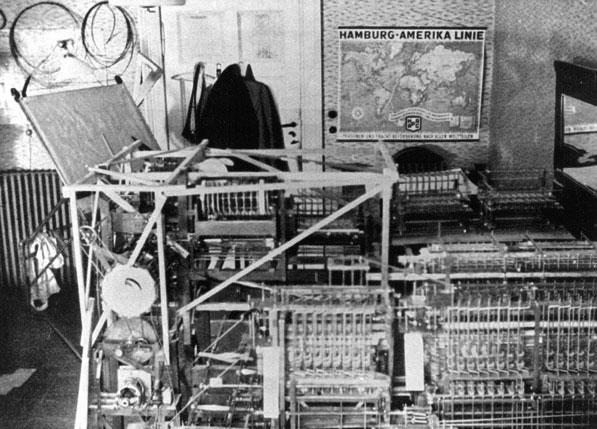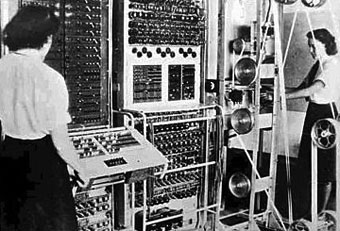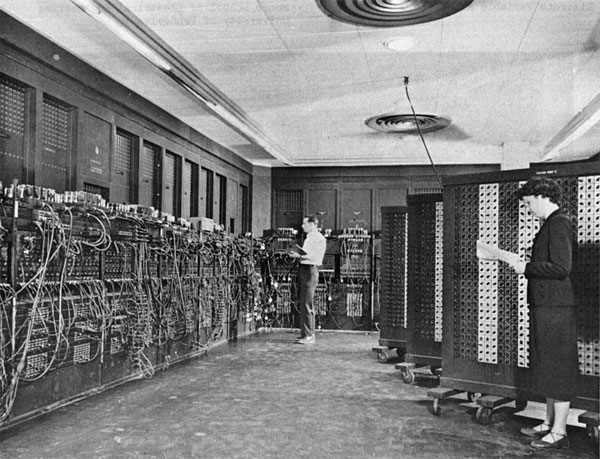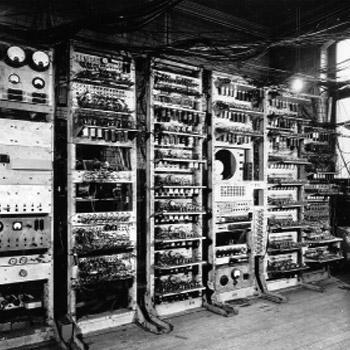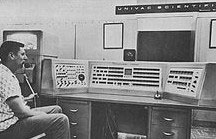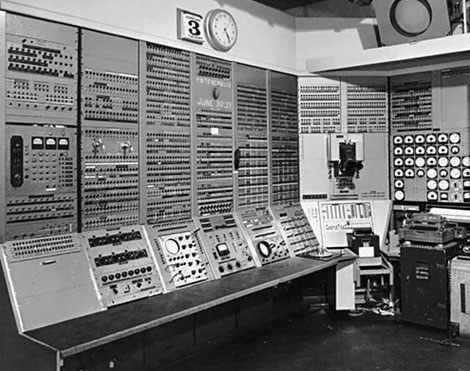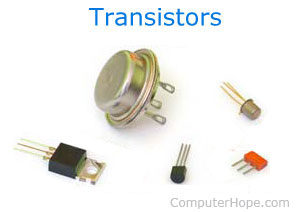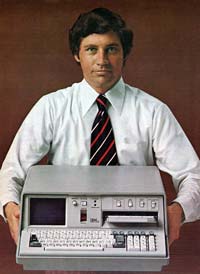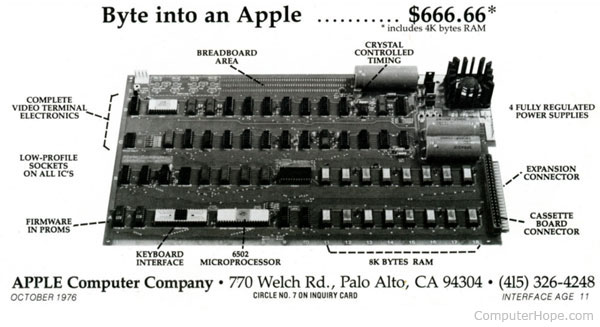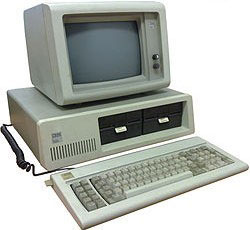Due to what invention could the first digital computers be built
Due to what invention could the first digital computers be built
Составьте аннотацию к тексту (2-3 предложения)



Составьте словообразовательный анализ текста
8. Составьте план текста и перескажите текст
Самостоятельная работа №6
1. Прочитайте и переведите текст:
The First Computers
In 1930 the first analog computer was built by American named Vannevar Bush. This device was used in World War II to help aim guns.
Many technical developments of electronic digital computers took place in the 1940s and 1950s. Mark I, the name given to the first digital computer, was completed in 1944. The man responsible for this invention was Professor Howard Aiken. This was the first machine that could figure out long lists of mathematical problems at a very fast rate. In 1946 two engineers at the University of Pennsylvania, J. Eckert and J. Maushly, built their digital computer with vacuum tubes. They named their new invention ENIAC (the Electronic Numerical Integrator and Calculator). Another important achievement in developing computers came in 1947, when John von Neumann developed the idea of keeping instructions for the computer inside the computer’s memory. The contribution of John von Neumann was particularly significant. As contrasted with Babbage’s analytical engine, which was designed to store only data, von Neumann’s machine, called the Electronic Discrete Variable Computer, or EDVAC, was able to store both data and instructions. He also contributed to the idea of storing data and instructions in a binary code that uses only ones and zeros. This simplified computer design. Thus computers use two conditions, high voltage, and low voltage, to translate the symbols by which we communicate into unique combinations of electrical pulses. We refer to these
combinations as codes.
Neumann’s stored program computer as well as other machines of that time was made possible by the invention of the vacuum tube that could control and amplify electronic signals. Early computers, using vacuum tubes, could perform computations in thousandths of seconds, called milliseconds, instead of seconds required by mechanical devices.
2. Ответьте на вопросы по тексту:
1. When was the first analog computer built? 2. Where and how was that computer used? 3. When did the first digital computers appear? 4. Who was the inventor of the first digital computer? 5. What could that device do? 6. What is ENIAC? Decode the word. 7. What was J. Neumann’s contribution into the development of computers? 8. What were the advantages of EDVAC in comparison with ENIAC? 9. What does binary code earn? 10. Due to what invention could the first digital computers be built?
3. Найдите в тексте английские эквиваленты:
Цифровые компьютеры; технические усовершенствования; совершенствование компьютеров; ответственный за изобретение; математические задачи; электронные трубки; важное достижение; запоминающее устройство; значительный вклад; двоичный код; высокое напряжение; низкое напряжение; электрические импульсы; тысячная доля секунды, происходить; завершать; вычислять; хранить команды внутри компьютера; запоминать информацию; запоминать команды; содействовать; использовать единицу и ноль; упрощать дизайн; усиливать сигналы; выполнять вычисления.
4. Заполните пропуски:
5. Переведите следующие предложения, обращая внимания на функции инфинитива:
1. Computers were designed to perform thousands of computations per second. 2. To make computers more reliable transistors were used. 3. They were applied to reduce computational time. 4. To integrate large numbers of circuit elements into a small chip, transistors should be reduced in size. 5. To use integrated circuit technology new computers were built. 6. Analytical engine was invented to store data.
6. Переведите следующие словосочетания, обращая внимания на функции инфинитива:
The problem to be solved; the work to be finished; the cards to be punched; calculations to be performed; the machine to be shown at the exhibition; the device to be provided with the necessary facts; computers to be used for data processing; efforts to increase reliability; electronics to connect systems and subsystems; the speed of response to depend on the size of transistor; computers to perform thousands of calculations per second; vacuum tubes to control and amplify electric signals; these are circuits to use a large number of transistors; operations to be performed.
Помогите с Английским
Помогите!! Нужно по тексту ответить на вопросы!
The first computers
In 1930 the first analog computer was built by American
named Vannevar Bush. This device was used in World War II to help aim
guns.
Many technical developments of electronic digital comput-
ers took place in the 1940s and 1950s. Mark I, the name given to the
first digital computer, was completed in 1944. The man responsible for
this invention was Professor Howard Aiken. This was the first machine
that could figure out long lists of mathematical problems at a very fast
rate.
In 1946 two engineers at the University of Pennsylvania,
J.Eckert and J.Maushly, built their digital computer with vacuum tubes.
They named their new invention ENIAC (the Electronic Numerical
Integrator and Calculator).
Another important achievement in developing computers
came in 1947, when John von Neumann developed the idea of keeping
instructions for the computer inside the computer’s memory. The
contribution of John von Neumann was particularly significant. As
contrasted with Babbage’s analytical engine, which was designed to store
only data, von Neumann’s machine, called the Electronic Discrete
Variable Computer, or EDVAC, was able to store both data and
instructions. He also contributed to the idea of storing data and
instructions in a binary code that uses only ones and zeros. This
simplified computer design. Thus computers use two conditions, high
voltage, and low voltage, to translate the symbols by which we commu-
nicate into unique combinations of electrical pulses. We refer to these
combinations as codes.
Neumann’s stored program computer as well as other ma-
chines of that time were made possible by the invention of the vacuum
tube that could control and amplify electronic signals. Early computers,
using vacuum tubes, could perform computations in thousandths of
seconds, called milliseconds, instead of seconds required by mechanical
devices.
1. When was the first analog computer built? 2. Where and how was
that computer used? 3. When did the first digital computers appear? 4.
Who was the inventor of the first digital computer? 5. What could that
device do? 6. What is ENIAC? Decode the word. 7. What was
J.Neumann’s contribution into the development of computers? 8. What
were the advantages of EDVAC in comparison with ENIAC? 9. What
does binary code earn? 10. Due to what invention could the first digital
computers be built?
Давай я переведу, а ты с русским легко справишься) )
Текст:
Первые компьютеры
Просмотрите текст еще раз и ответьте на вопросы, используя информацию текста



1. When was the first analog computer built? 2. Where and how was that computer used? 3. When did the first digital computers appear? 4. Who was the inventor of the first digital computer? 5. What could that device do? 6. What is ENIAC? Decode the word. 7. What was J.Neumann’s contribution into the development of computers? 8. What were the advantages of EDVAC in comparison with ENIAC? 9. What does binary code mean? 10. Due to what invention could the first digital computers be built?
9. Найдите в тексте 2 английские эквиваленты следующих словосочетаний.
Цифровые компьютеры; технические усовершенствования; совершенствование компьютеров; ответственный за изобретение; математические задачи; электронные трубки; важное достижение; запоминающее устройство; значительный вклад; двоичный код; высокое напряжение; низкое напряжение; электрические импульсы; тысячная доля секунды.
Происходить; завершать; вычислять; хранить команды внутри компьютера; запоминать информацию; запоминать команды; содействовать; использовать единицу и ноль; упрощать дизайн; усиливать сигналы; выполнять вычисления.
10. Заполните пропуски необходимыми словами.
1. The first digital computer could _____ a lot of mathematical problems at a fast ____2. Vannevar Bush built the first _____ computer in 1930. 3. Babbage’s analytical engine was designed to ____ data. 4. J.von Neumann invented a machine that was able to ___ not only data but also ____. 5. Neumann ____ the idea of storing data in a ___ ____. 6. Computers use two conditions for _____ symbols. 7. The invention of ___ ____made computers possible to control and ____ electronic signals. 8. Due to ____ ____ computers could perform _____ much faster.
11. Переведите предложения или словосочетания, содержащие:
А. Инфинитив в функции обстоятельства
I. Computers were designed to perform thousands of computations per second. 2. To make computers more reliable transistors were used. 3. They were applied to reduce computational time. 4. To integrate large numbers of circuit elements into a small chip, transistors should be reduced in size. 5. To use integrated circuit technology new computers were built. 6. Analytical engine was invented to store data.
Б. Инфинитив в функции определения
The problem to be solved; the work to be finished; the cards to be punched; calculations to be performed; the machine to be shown at the exhibition; the device to be provided with the necessary facts; computers to be used for data processing; efforts to increase reliability; electronics to connect systems and subsystems; the speed of response to depend on the size of transistor; computers to perform thousands of calculations per second; vacuum tubes to control and amplify electric signals; these are circuits to use a large number of transistors; operations to be performed.
12. Выполните письменно перевод текста 3 по вариантам.
Text 3. SOME FIRST COMPUTER MODELS
1. Babbage’s Analytical Engine
In 1832, an English inventor and mathematician Charles Babbage was commissioned by the British government to develop a system for calculating the rise and fall of the tides.
Babbage designed a device and called it an analytical engine. It was the first programmable computer, complete with punched cards for data input. Babbage gave the engine the ability to perform different types of mathematical operations. The machine was not confined to simple addition, subtraction, multiplication, or division. It had its own “memory”, due to which the machine could use different combinations and sequences of operations to suit the purposes of the operator.
The machine of his dream was never realized in his life. Yet Babbage’s idea didn’t die with him. Other scientists made at- tempts to build mechanical, general-purpose, stored-program computers throughout the next century. In 1941 a relay computer was built in Germany by Conrad Zuse. It was a major step toward the realization of Babbage’s dream.
2. The Mark I Computer (1937—1944)
In 1944 in the United States, International Business Machines (IBM) built a machine in cooperation with scientists working at Harvard University under the direction of Prof. Aiken. The machine, called Mark I Automatic Sequence-Controlled Calculator, was built to perform calculations for the Manhattan Project, which led to the development of atomic bomb. It was the largest electromechanical calculator ever built. It used over 3000 electrically actuated switches to control its operations. Although its operations were not controlled electronically, Aiken’s machine is often classified as a computer because its instructions, which were entered by means of a punched paper tape, could be altered. The computer could create ballistic tables used by naval artillery.
The relay computer had its problems. Since relays are electromechanical devices, the switching contacts operate by means of electromagnets and springs. They are slow, very noisy and consume a lot of power.
3. The ABC (1939-1942)
The work on introducing electronics into the design of computers was going on.
The gadget that was the basis for the first computer revolution was the vacuum tube, an electronic device invented early in the twentieth century. The vacuum tube was ideal for use in computers. It had no mechanical moving parts. It switched flows of electrons off and on at rates far faster than possible with any mechanical device. It was relatively reliable, and operated hundreds of hours before failure. The first vacuum tube computer was built at Iowa University at about the same time as the Mark I. The computer, capable to perform thousands of related computations, was called ABC, the Atanasoff-Berry Computer, after Dr.John Atanasoff, a professor of physics and his assistant, Clifford Berry. It used 45 vacuum tubes for internal logic and capacitors for storage. From the ABC a number of vacuum-tube digital computers developed. Soon the British developed a computer with vacuum tubes and used it to decode German messages.
13. Прочтите текст 4 и передайте кратко его содержание а) на русском языке; б) на английском языке.
Text 4. FOUR GENERATIONS OF COMPUTERS
The first vacuum tubes computers are referred to as first generation computers, and the approximate period of their use was from 1950 to 1959. UNIVAC 1 (UNIVersal Automatic Computer) is an example of these computers which could perform thousands of calculations per second. Those devices were not only bulky, they were also unreliable. The thousands of vacuum lubes emitted large amounts of heat and burned out frequently.
The transistor, a smaller and more reliable successor to the vacuum tube, was invented in 1948. So-called second generation computers, which used large numbers of transistors were able to reduce computational time from milliseconds to microseconds, or millionths of seconds. Second-generation computers were smaller, faster and more reliable than first-generation computers.
Advances in electronics technology continued, and microelectronics made it possible to reduce the size of transistors and integrate large numbers of circuit elements into very small chips of silicon. The computers that were designed to use integrated circuit technology were called third generation computers, and the approximate time span of these machines was from 1960 to 1979. They could perform many data processing operations in nanoseconds, which are billionths of seconds.
Fourth generation computers have now arrived, and the integrated circuits that are being developed have been greatly reduced in size. This is due to microminiaturization, which means that the circuits are much smaller than before; as many as 100 tiny circuits are placed now on a single chip. A chip is a square or rectangular piece of silicon, usually from 1/10 to 1/4 inch, upon which several layers of an integrated circuit are etched or imprinted, after which the circuit is encapsulated in plastic or metal.
1. Подберите вместо пропусков подходящее по смыслу слово.
1. British scientists invented а _____ way of multiplying and dividing.
a) mechanical; b) electrical; c) optical
2. A new branch of mathematics, _____ was invented in England and Germany independently.
a) mechanics; b) arithmetics; c) calculus
3. A young American clerk invented a means of coding _____ by punched cards.
a) letters; b) data; c) numbers
4. Soon punched cards were replaced by ____ terminals.
a) printer; b) scanner; c) keyboard
5. Mark I was the first ____ computer that could solve mathematical problems.
a) analog; b) digital; c) mechanical
6. J. von Neumann simplified his computer by storing information in a _____ code.
a) analytical; b) numerical; c) binary
7. Vacuum tubes could control and ___ electric signals.
a) calculate; b) amplify; c) generate
8. The first generation computers were _______ and often burned out.
a) uncomfortable; b) uncommunicative; c) unreliable
9. Computers of the second generation used _____ which reduced computational time greatly.
a) transistors; b) integrated circuits; c) vacuum tubes
10. Due to ___ the development of the fourth generation computers became possible.
a) microelectronics; b) miniaturization; c) microminiaturization
План-конспект урока по английскому языку на тему: «The first computers»
урока по теме «The first computers»
Автор преподаватель Шварцберг Н.Б.
Технологическая карта по теме: « The first computers »
Тип занятия: практическое занятие
Форма организации обучения: учебное занятие
Цель занятия: развивать иноязычную коммуникативную компетенцию.
• Введение нового материала;
• Подведение итогов занятия
Образовательные задачи занятия:
· Совершенствование диалогической и монологической речи;
· ОК 4: осуществлять поиск и использование информации
· ОК 6: работать в коллективе и команде;
Развивающие задачи занятия:
• развивать умение анализировать, самостоятельно делать выводы и устанавливать причинно-следственные связи;
• развивать познавательный интерес к предмету, мотивацию к изучению предмета, развивать коммуникативные компетенции;
• развивать самостоятельность обучающихся, умения преодолевать трудности в учении в ходе изучения нового материала;
• развитие критического мышления;
• развить умения ориентироваться в тексте, осуществлять поиск информации
Воспитательные задачи занятия:
• способствовать формированию интереса к системам образования в России
• воспитание усидчивости и культуры учебного труда
• воспитание стремления к преодолению трудностей
• воспитание гуманности, чувства коллективизма, чувства такта при общении с сокурсниками;
1. Организационныймомент2 мин
Приветствие, проверкаприсутствующих. Объяснениецелейизадачзанятия.
Good morning boys and girls! How are you? What date is it today? What day of the week is it today? Who is absent?
Определение целей занятия :
Today we have the lesson on the topic « The first computers ”. We shall learn a new material about it.
Определение целей занятия (для мотивации учебной деятельности)
Цель этапа : подготовить обучающихся к активной совместной деятельности
2. Фонетическаязарядка: 3 мин
Методы и приемы:
Развитие фонематического слуха
1. 1. Who are you?
My first name is_______. My surname is______.
2. 2. How old are you?
I am _______ years old.
3. Do you work or do you study?
4. Where do you study?
I study at College of Communication number 54.
5. Are you a full-time or a part-time student?
I am a full-time student.
6. What department are you in?
I am in a mechanical department.
7. What year are you in?
I am in the second year.
8. What is your future specialty?
My future speciality is a technician.
9. What will you be?
I shall be a technician.
10. Where will you work?
I shall work at a car service as a technician.
11. Do you like your future speciality?
I like my future speciality.
12. Why do you like your future speciality?
I like my future speciality because I like cars.
Методы и приемы:
• Умение применять ранее полученные знания в новых ситуациях;
• Развитие познавательной активности.
Развитие и понимание речи на слух
4. Введение нового материала: 25 мин
1. Новая лексика по теме:
Analogcomputer –аналоговый компьютер
Digitalcomputer – цифровой компьютер
Toaimguns – наводить орудия на цель
To figure out – вычислять
Memory / storage – запоминающееустройство
Storedprogramcomputer – компьютер с занесенной в память программой
Condition – режим, состояние, условие
Vacuumtube –электронная (вакуумная) трубка (лампа)
To amplify – усиливать
To perform computations – выполнятьвычисления
2. Переведитетекст . Приложение№1
Методы и приемы:
Метод стимулирования интереса к учению
Формирование умений находить главное
Мотивация учебной деятельности, объединение обучающихся и преподавателя в совместную учебную деятельность
Методы и приемы:
Наглядный – развитие наблюдательности, повышение внимания к изучаемому вопросу, развитие познавательной активности
Формирование и закрепление изученного ранее материала
Translate into English
Цифровые компьютеры; технические усовершенствова ния; совершенствование компьютеров; ответственный за изобретение; математические задачи; электронные трубки; важное достижение; запоминающее устройство; значи тельный вклад; двоичный код; высокое напряжение; низ кое напряжение; электрические импульсы; тысячная доля секунды.
Происходить; завершать; вычислять; хранить команды внутри компьютера; запоминать информацию; запоминать команды; содействовать; использовать единицу и ноль; упрощать дизайн; усиливать сигналы; выполнять вычис ления.
Методы и приемы:
Реализация задач обучения
THE FIRST COMPUTERS
In 1930 the first analog computer was built by American named Vannevar Bush. This device was used in W& r II to help aim guns.
Many technical developments of electronic digital computers took place in the 1940s and 1950s. Mark I, the name given to the first digital computer, was completed in 1944. The man responsible for this invention was Professor Howard Aiken. This was the first machine that could figure out long lists of mathematical problems at a very fast rate.
In 1946 two engineers at the University of Pennsilvania, J.Eckert and J.Maushly, built their digital computer with vacuum tubes. They named their new invention ENIAC (the Electronic Numerical Integrator and Calculator).
Another important achievement in developing computers came in 1947, when John von Neumann developed the idea of keeping instructions for the computer inside the computer’s memory. The contribution of John von Neumann was particularly significant. As contrasted with Babbage’s analytical engine, which was designed to store only data, von Neumann’s machine, called the Electronic Discrete Variable Computer, or EDVAC, was able to store both data and instructions. He also contributed to the idea of storing data and instructions in a binary code that uses only ones and zeros. This simplified computer design. Thus computers use two conditions, high voltage, and low voltage, to translate the symbols by which we communicate into unique combinations as codes.
Neumann’s stored program computer as well as other machines of that time were made possible by the invention of the vacuum tube could control and amplify electronic signals. Early computers, using vacuum tubes, could perform computations in thousandths of seconds, called milliseconds, instead of seconds required by mechanical devices.
When was the first computer invented?
There is no easy answer to this question due to the many different classifications of computers. The first mechanical computer, created by Charles Babbage in 1822, doesn’t resemble what most would consider a computer today. Therefore, this page provides a listing of each of the computer firsts, starting with the Difference Engine and leading up to the computers we use today.
Early inventions that lead up to the computer, such as the abacus, astrolabe, slide rule, clocks, calculator, and tablet machines, are not accounted for on this page.
When was the word «computer» first used?
The word «computer» was first used in 1613 in the book The Yong Mans Gleanings by Richard Braithwaite and originally described a human who performed calculations or computations. The definition of a computer remained the same until the end of the 19th century, when the industrial revolution gave rise to mechanical machines whose primary purpose was calculating.
First mechanical computer or automatic computing engine concept
In 1822, Charles Babbage conceptualized and began developing the Difference Engine, which is considered the first automatic computing machine that could approximate polynomials. The Difference Engine was capable of computing several sets of numbers and making hard copies of the results. Babbage received some help with the development of the Difference Engine from Ada Lovelace, considered to be the first computer programmer for her work. Unfortunately, because of funding, Babbage was never able to complete a full-scale functional version of this machine. In June 1991, the London Science Museum completed the Difference Engine No 2 for the bicentennial year of Babbage’s birth and later completed the printing mechanism in 2000.
First general-purpose computer
In 1837, Charles Babbage proposed the first general mechanical computer, the Analytical Engine. The Analytical Engine contained an ALU (Arithmetic Logic Unit), basic flow control, punch cards (inspired by the Jacquard Loom), and integrated memory. It is the first general-purpose computer concept that could be used for many things and not only one particular computation. Unfortunately, because of funding issues, this computer was also never built while Charles Babbage was alive. In 1910, Henry Babbage, Charles Babbage’s youngest son, was able to complete a portion of this machine and perform basic calculations.
The first machine to record and store information
In 1890, Herman Hollerith developed a method for machines to record and store information on punch cards for the US census. Hollerith’s machine was approximately ten times faster than manual tabulations and saved the census office millions of dollars. Hollerith would later form the company we know today as IBM.
First programmable computer
The Z1 was created by German Konrad Zuse in his parents’ living room between 1936 and 1938. It is considered to be the first electromechanical binary programmable computer and the first functional modern computer.
Konrad Zuse would also later created the Z3, the first functioning programmable computer that could be fully automated.
First concepts of what we consider a modern computer
The Turing machine was first proposed by Alan Turing in 1936 and became the foundation for theories about computing and computers. The machine was a device that printed symbols on paper tape in a manner that emulated a person following several logical instructions. Without these fundamentals, we wouldn’t have the computers we use today.
The first electric programmable computer
The Colossus was the first electric programmable computer, developed by Tommy Flowers, and was first demonstrated in December 1943. The Colossus was created to help the British code breakers read encrypted German messages.
The first digital computer
Short for Atanasoff-Berry Computer, the ABC began development by Professor John Vincent Atanasoff and graduate student Cliff Berry in 1937. Its development continued until 1942 at the Iowa State College (now Iowa State University).
The ABC was an electrical computer that used more than 300 vacuum tubes for digital computation, including binary math and Boolean logic, and had no CPU (was not programmable). On October 19, 1973, US Federal Judge Earl R. Larson signed his decision that the ENIAC patent by J. Presper Eckert and John Mauchly was invalid. In the decision, Larson named Atanasoff the sole inventor.
The ENIAC was invented by J. Presper Eckert and John Mauchly at the University of Pennsylvania and began construction in 1943 and was not completed until 1946. It occupied about 1,800 square feet and used about 18,000 vacuum tubes, weighing almost 50 tons. Although a judge later ruled the ABC computer was the first digital computer, many still consider the ENIAC to be the first digital computer because it was fully functional.
The first stored program computer
The first computer to electronically store and execute a program was the SSEM (Small-Scale Experimental Machine), also known as the «Baby» or «Manchester Baby,» in 1948. It was designed by Frederic Williams, and built by his protégée, Tom Kilburn, with the assistance of Geoff Tootill, at the University of Manchester, England. Kilburn wrote the first electronically-stored program, which finds the highest proper factor of an integer, using repeated subtraction rather than division. Kilburn’s program was executed on June 21, 1948.
The second stored-program computer was also British: the EDSAC, built and designed by Maurice Wilkes at the University of Cambridge Mathematical Laboratory in England. The EDSAC performed its first calculation on May 6, 1949. It was also the first computer to run a graphical computer game, «OXO,» an implementation of tic-tac-toe displayed on a 6-inch cathode ray tube.
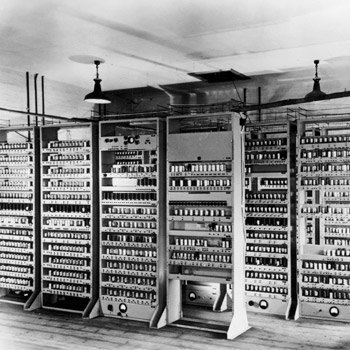
Around the same time, the Manchester Mark 1 was another computer that could run stored programs. Built at the Victoria University of Manchester, the first version of the Mark 1 computer became operational in April 1949. Mark 1 was used to run a program to search for Mersenne primes for nine hours without error on June 16 and 17 that same year.
The first computer company
The first computer company was Electronic Controls Company and was founded in 1949 by J. Presper Eckert and John Mauchly, the same individuals who helped create the ENIAC computer. The company was later renamed to EMCC or Eckert-Mauchly Computer Corporation and released several mainframe computers under the UNIVAC name.
First computer with a program stored in memory
First delivered to the United States government in 1950, the UNIVAC 1101 or ERA 1101 is considered the first computer capable of storing and running a program from memory.
First commercial computer
In 1942, Konrad Zuse began working on the Z4 that later became the first commercial computer. The computer was sold to Eduard Stiefel, a mathematician of the Swiss Federal Institute of Technology Zurich, on July 12, 1950.
IBM’s first computer
On April 7, 1953, IBM publicly introduced the 701, its first commercial scientific computer.
The first computer with RAM
MIT introduces the Whirlwind machine on March 8, 1955, a revolutionary computer that was the first digital computer with magnetic core RAM and real-time graphics.
The first transistor computer
The TX-0 (Transistorized Experimental computer) is the first transistorized computer to be demonstrated at the Massachusetts Institute of Technology in 1956.
The first minicomputer
In 1960, Digital Equipment Corporation released its first of many PDP computers, the PDP-1.
The first desktop and mass-market computer
In 1968, Hewlett Packard began marketing the HP 9100A, considered to be the first mass-marketed desktop computer.
The first workstation
Although it was never sold, the first workstation is considered to be the Xerox Alto, introduced in 1974. The computer was revolutionary for its time and included a fully functional computer, display, and mouse. The computer operated like many computers today utilizing windows, menus, and icons as an interface to its operating system. Many of the computer’s capabilities were first demonstrated in The Mother of All Demos by Douglas Engelbart on December 9, 1968.
The first microprocessor
Intel introduces the first microprocessor, the Intel 4004, on November 15, 1971.
The first microcomputer
The first personal computer (PC)
The first laptop or portable computer
The IBM 5100 is the first portable computer, which was released in September 1975. The computer weighed 55-pounds and had a five-inch CRT display, tape drive, 1.9 MHz PALM processor, and 64 KB of RAM. In the picture is an ad of the IBM 5100 taken from a November 1975 issue of Scientific American.
The IBM PCD (PC Division) later released the IBM portable in 1984, its first portable computer that weighed 30-pounds. Later in 1986, IBM PCD announced its first laptop computer, the PC Convertible, weighing 12-pounds. Finally, in 1994, IBM introduced the IBM ThinkPad 775CD, the first notebook with an integrated CD-ROM.
The first Apple computer
The first IBM personal computer
IBM introduced its first personal computer, the IBM PC, in 1981. The computer was code-named Acorn. It featured an 8088 processor, 16 KB of memory, which was expandable to 256 and used MS-DOS.
The first PC clone
The Compaq Portable is considered to be the first PC clone and was released in March 1983 by Compaq. The Compaq Portable was 100% compatible with IBM computers and was capable of running any software developed for IBM computers.
The first multimedia computer
In 1992, Tandy Radio Shack released the M2500 XL/2 and M4020 SX, among the first computers to feature the MPC standard.
Other computer company firsts
Below is a listing of some of the computer company’s first computers.






